Composite veneers
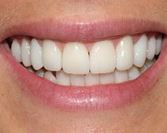
Composite veneers are thin tooth pads made of composite materials by layering.
Their difference from conventional pads is that veneers are made of composite material directly in the patient's oral cavity.
Composite plates are also called direct veneers or therapeutic, since their production takes place in one visit.
The doctor applies a reflective composite material on the frontal surface of the tooth.
In this area of the teeth, the veneer will last a longer time, since in this place the teeth experience minimal pressure when eating.
Direct composite veneers are quite durable with proper care and use.
How to make
Unlike indirect, therapeutic veneers are made by direct method in the patient’s oral cavity from a composite material.
The manufacturing steps are as follows:
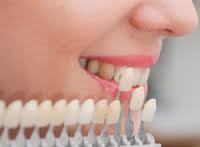
- The dentist examines the oral cavity and evaluates the condition of the teeth to be restored.
- On a Vita scale, the doctor, together with the patient, selects the color of the restoration material.
- Grinding of teeth to be veneered. The thickness of the removed enamel layer is approximately 0.3 - 0.7 mm.
- Layering composite material on the turned surface of the tooth.
- The surface of the finished veneer is grinded and ground.
Indications
- Correction of tooth irregularities.
- Microcracks, enamel chips.
- The gap between the teeth.
- Discoloration of teeth.
Composite veneering makes sense if you need to restore one or two teeth. If we are talking about restoring the aesthetics of the entire smile area, then indirect veneers would be the best option.
Contraindications
Installation of composite veneers is not recommended in the same cases as with indirect veneering.
Contraindications include:
- Inadequate oral hygiene.
- Malocclusion.
- Exacerbation of diseases of the gums and teeth.
- Brucism (gnashing of teeth at night).
- Pathological abrasion of teeth.
- Thinning of tooth enamel.
- Tooth mobility.
- Depuluted teeth.
- The presence of serious enamel defects that cannot be hidden when installing veneers.
The first four contraindications are relative, and after their elimination, veneering with composite materials becomes possible.
Life time
Composite veneers, unlike indirect veneers, require a renewal approximately every five years.
Regarding care, in addition to standard daily hygiene measures using toothpaste, brush, irrigator and floss, composite pads need polishing.
Therefore, visits to the dentist should be regular. It is necessary to protect veneers from excessive mechanical stress.To avoid damage to the plate, you can wear protective mouthguards at night.
Advantages
- One of the main advantages is the cost. Veneers made of composite materials do not require complex technology for their installation and the use of expensive materials. These factors are associated with their low price.
- Not a lot of time is required Installation of composite veneers is done in one medical appointment. For the manufacture of overlays, it is not necessary to take casts and send them to the laboratory. Veneers are made directly in the patient's mouth.
disadvantages
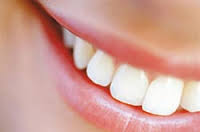
- The main disadvantage is the inaccuracy of adherence to the surface of the tooth, which leads to the accumulation of plaque and the growth of bacteria in border areas, thereby causing caries and gum disease.
- Unlike ceramic veneers, composite linings are less aesthetic.
- Over time, the lining darkens and replacement becomes necessary.
- Veneers made of composite material are quite fragile, and therefore less reliable.
- Over time, the linings can grind off, become rough.
- Composite veneers can change color and tint.
Cost
As mentioned above, the cost of direct veneers is lower than indirect. The price of composite veneers depends on the status of the dental clinic and on the skill of the dentist.
Prices in Moscow for composite veneers are higher than in clinics in other regions of Russia.
In dental clinics of economy class, the cost of such pads is in the range 2500 - 3000 rubles and comes to 15,000 rubles in premium dentistry.
The higher the price of composite veneer, the higher quality should be the level of work of a dentist to create it.
Reviews
Composite veneers rarely done at present, but still, such cases are found and reviews owners of such overlays are very different.
- When a gap in the tooth formed as a result of caries, I put the veneer from the composite. The dentist applied the material in several layers. Ten years have passed since then. Veneer stands still safe and sound. Only the color of the lining has changed. She faded and darkened. Now this tooth is very different in appearance from the rest of the teeth.
- I had a composite veneer on my broken tooth for seven years. Recently I changed it to ceramic for the reason that the tooth was different from the rest. I want to say that the material from which the composite veneer is made is too dense and not as similar to a natural tooth as ceramic veneer.
- Four years ago, she put composite veneers on her upper teeth. I have no complaints about the pads. I eat everything I want: apples and even nuts. Nothing breaks. The color of the veneers is the same as the color of the remaining teeth. Composite veneers helped me get rid of a defect in my front teeth.
Before and after photos
 |
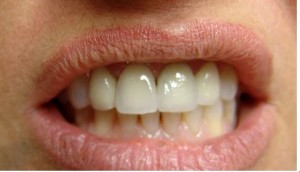 |
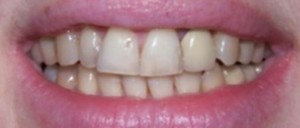 |
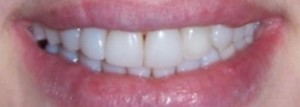 |
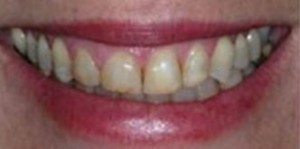 |
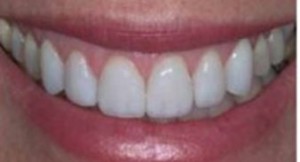 |